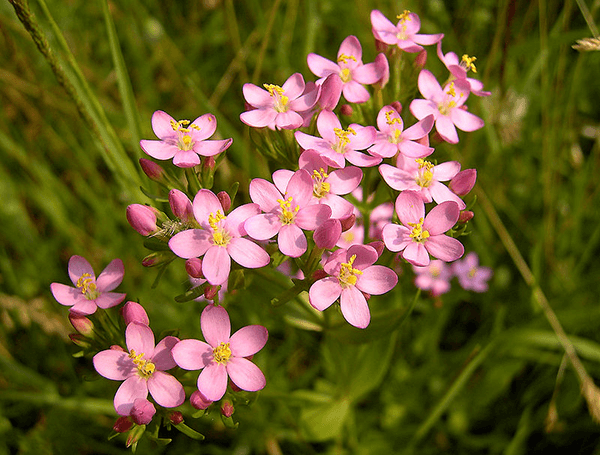Izradu internetske stranice sufinancirala je Europska unija u okviru operativnog programa Konkurentnost i kohezija iz Europskog fonda za regionalni razvoj.
saznajte više

COMMON CENTAURY
lat. Centaurium erythraea
Other names: Centaury , minor centaury , lesser centaury , centaury herb , centaurri herba , common centaury , feverwort , filwort , bitter herb, red centaury , Christ’s ladder and centaury gentian.
Scroll
Habitat:
The plant is native throughout Europe, south to North Africa and east through Eastern Europe to the Middle East and Pakistan. It has been introduced to a wide area, including Australia, New Zealand, Canada, the United States and scattered localities in Central and South America.
Plant Description:
Centaury is an erect biennial herb growing about half a meter in height. The plant is found growing in open woods, meadows and dry grasslands, muds and wet sands, shady paths, grassy places, stony pastures, dry meadows, moors, thickets and garrigues, from the plain up to 1500 meters of altitude. It grows in any type of soil, often on chalky soils and particularly in seasonally damp, sandy depressions. Roots are yellowish, fibrous and woody. Stiff, square stem is quite distinctive and ranges from approximately 7 to 30 cm (3 to 12 inches) in height. Centaurium erythraea is a species of flowering plant in the gentian family known by the common names Centaury , minor centaury , lesser centaury , centaury herb , centaurri herba , common centaury , feverwort , filwort , bitter herb, red centaury , Christ’s ladder and centaury gentian.
Pharmaceutical use:
Centaury has many functions and it is considered to be a great tonic and aromatic stomachic that can use help with gastrointestinal disturbances and strengthen stomach function when it is taken before meal. It helps to stimulate gastric secretions. Centaury has a strong bitter properties that helps with heartburn, gas pains in the intestines and stomach, bloating, constipation and colic. The herb is considered to be a diaphoretic, meaning that it helps stimulate perspiration. This is useful to help cool the body, lowers fevers and expels toxins from the body via the skin. The capability makes centaury useful in the treatment of intermittent fevers and feverish illnesses and explains why the plant was once used to treat malaria. Centaury is thought to help strengthen the kidneys, making it beneficial for bladder control in elderly people, or others who experience problems with bedwetting and urinary control. It has been used to expel worms from the intestines. It can also be used externally as an antiseptic to destroy body vermin and lice as a treatment for dandruff. It has also been used as an application to help heal wounds and sores.
Cautions:
Please be aware that herbs, although natural can interact with certain medications, and that they may be ill advised to use under certain health conditions. Please consult a qualified health practitioner for cautions pertinent to you.
No therapeutic claim is made or intended for AZENA products. Information is for educational purposes only.




